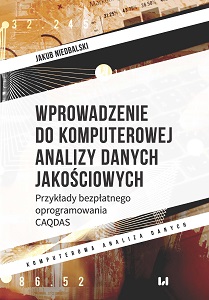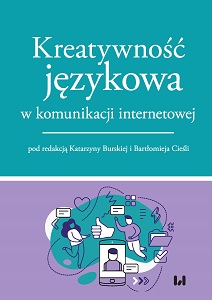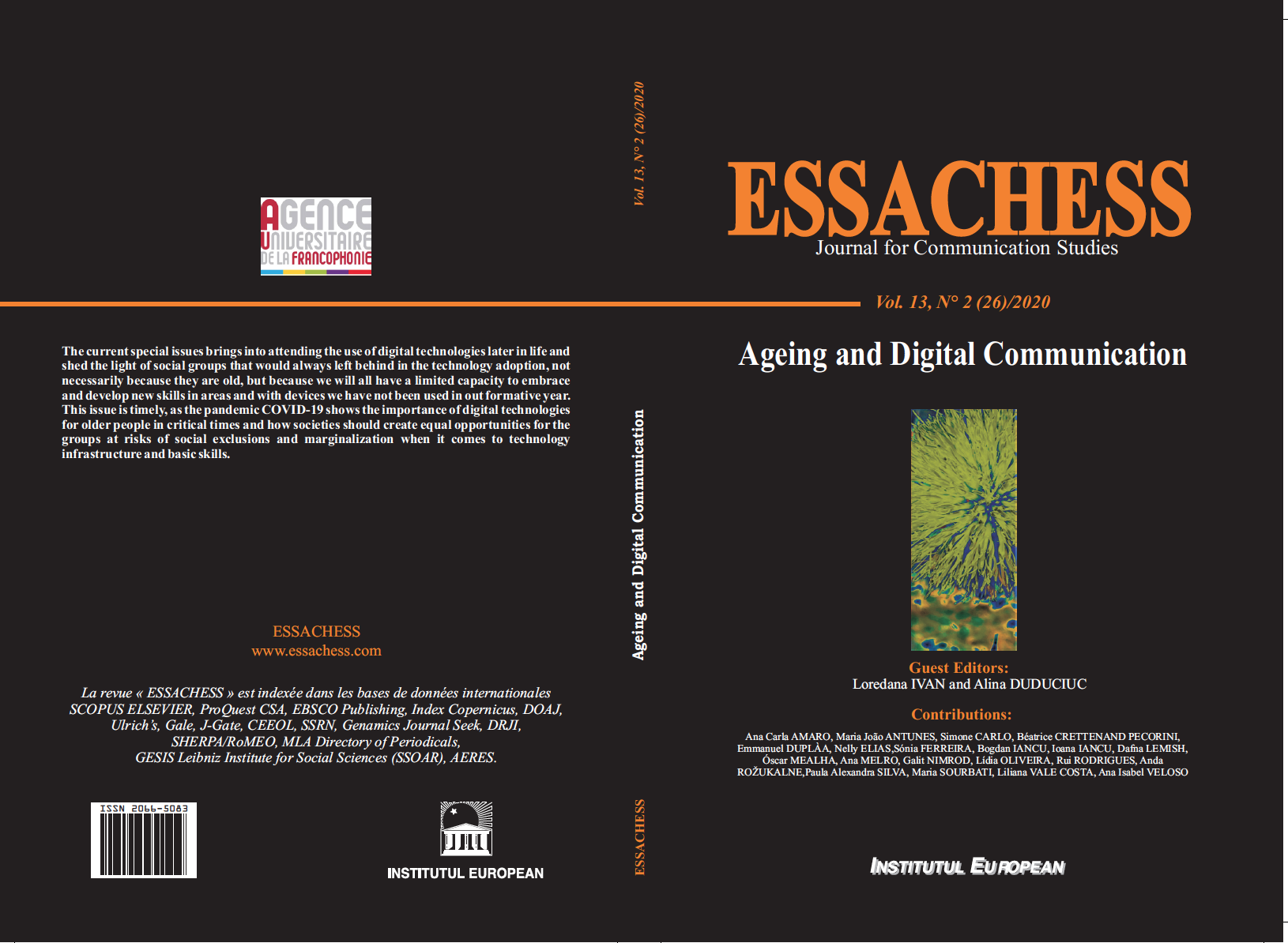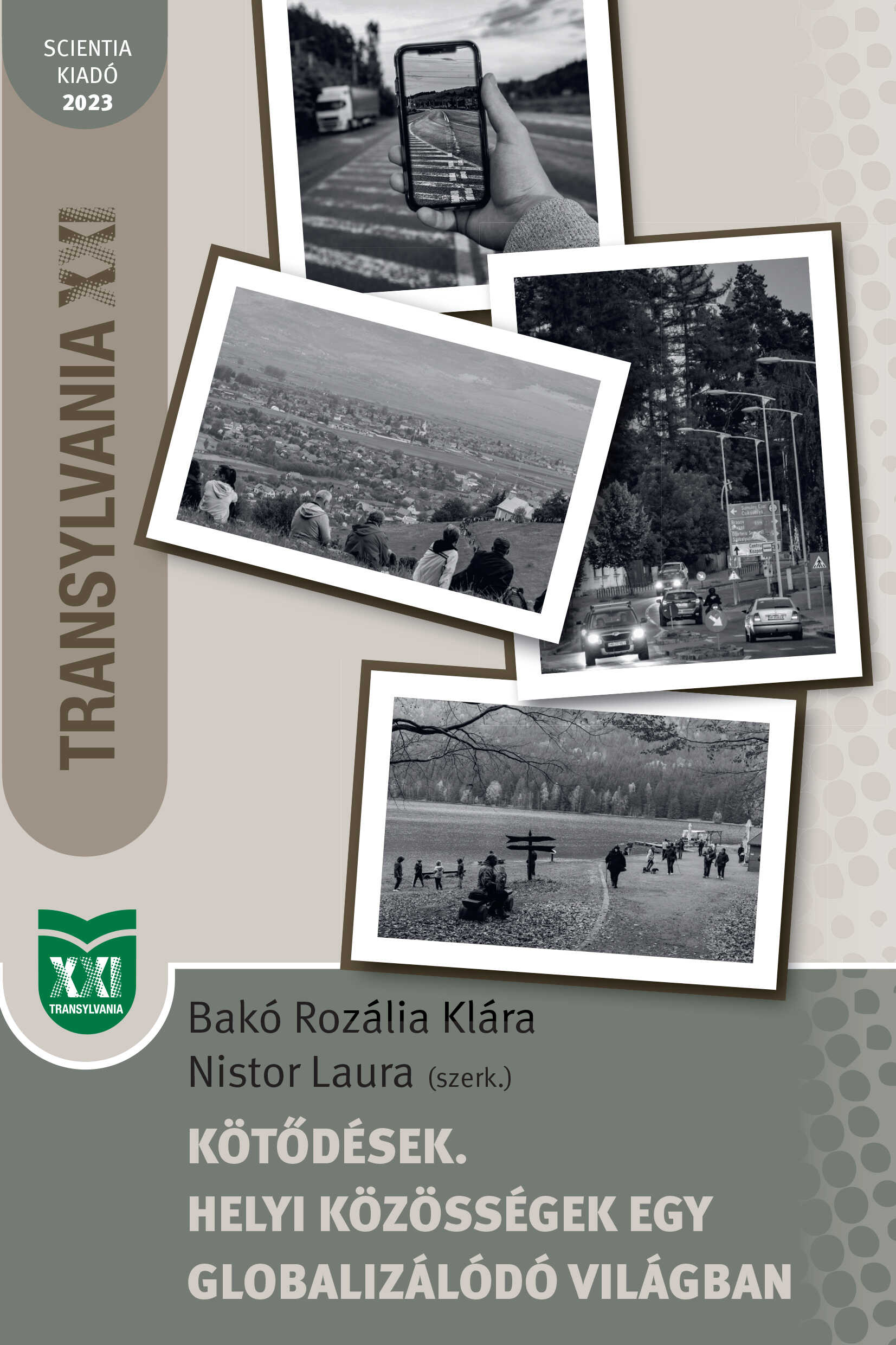
We kindly inform you that, as long as the subject affiliation of our 300.000+ articles is in progress, you might get unsufficient or no results on your third level or second level search. In this case, please broaden your search criteria.


The main aim of this article is to identify the types and the use of social media and its character by users with particular regard to gender as a differentiating criterion. In addition, differentiation will be shown in different countries and cultures in which the empirical study was conducted.
More...
One of the main challenges in developing and applying modern technologies in our societies is the identification and consideration of ethical issues. With the dramatic growth of emerging technologies in today's societies, such as social robots, lifelike computer graphics (avatars), and virtual reality tools and haptic systems, the social complexity of these challenges is on the rise. To be prepared to face these challenges, researchers in engineering sciences and humanities are forming interdisciplinary research groups/activities and try to determine the rate of evolution as well as the effects of socio-cognitive systems on human interaction with intelligent tools and/or artificial agents. A growing number of social robotics researchers are seeking to create a framework to benefit from humanities, philosophy, sociology, and social neuroscience expertise and research. Likewise, growing trends of mutual collaboration among scholars in the field of human sciences, linguistics, and psychology with the robotics scientists are producing quite noticeable valuable results. This paper presents an overview of the novel and multidisciplinary area of socio-cognitive robotics, and further explores the possible ethical challenges of emerging technologies on education, culture, entertainment, gaming, nursing, and therapy. In addition, some key ethical features based on our past and present research experiences in a variety of areas in designing safe social robots are also presented.
More...
The current paper analyzes the issue of Artificial Intelligence—AI—focusing on Artificial General Intelligence—AGI—and Artificial Super Intelligence—ASI—from the perspective of international law. It begins with the acknowledgment of the fact that AI poses historically unique challenges on the basis of its ontological characteristics and mainly of the emerging autonomy. Its autonomy bears the potential of leading to actual personhood—or raising AI entities to the status of “being”—thus necessitating the attribution of legal personhood too. Such a situation would be groundbreaking for all legal systems as well as for the way we comprehend various conducts, terms and legal relationships. In this framework, of the ecumenical challenges that AI poses, the article argues in favor of a common, international response, through the international law supremacy principle. In addition to that, the article makes the argument for the regulation of AI entities that lie at an intermediate technological phase, meaning for those which have surpassed the level of “res”, without constituting fully autonomous “beings” yet and thus raising the issue of the attribution of legal personhood, that the regulatory framework of global commons could be adopted, both for the entities themselves, as well as for their creations.
More...
Recently, Facebook creator Mark Zuckerberg was on trial for the misuse of personal data. In 2013, the National Security Agency was exposed by Edward Snowden for invading the privacy of inhabitants of the United States by examining personal data. We see in the news examples, like the two just described, of government agencies and private companies being less than truthful about their use of our data. A related issue is that these same government agencies and private companies do not share their own data, and this creates the openness of data problem. Government, academics, and citizens can play a role in making data more open. In the present, there are non-profit organizations that research data openness, such as Open Data Charter, Global Open Data Index, and Open Data Barometer. These organizations have different methods on measuring openness of data, so this leads us to question what does open data mean, how does one measure how open data is and who decides how open should data be, and to what extent society is affected by the availability, or lack of availability, of data. In this paper, we explore these questions with an examination of two of the non-profit organizations that study the open data problem extensively.
More...
The book describes CAQDA software that support qualitative data analysis. These are free tools, commonly available, which offer relatively broad possibilities and require no special hardware or knowledge regarding standard computer programs (such as e.g. MS Office). The presented programs allow to work with texts and analyze the audiovisual materials. The publication also includes some practical tips on selection of software that can be followed while implementing research projects. This is why the book should find readers not only among students, doctoral students and researchers interested in qualitative data analysis aided with specialist computer software, but also among all of those who look for such tools in their work.
More...
Social robots applications are becoming more and more popular in our daily life. Advertising, in this case, apparel advertising, is an area that humans must deal with every day. RoMa is a social robot mannequin that has been designed and developed as a mobile robot for use in the field of advertising and visual trading. In this paper, characteristics such as the interaction of people with RoMa, the impact of using a social robot on the sustainability of a store’s brand name for customers, the desire to revisit the store for another purchase, and the robot's structural features were measured in a Tehran retail store using various tools such as questionnaires, cameras, and a microphone. Finally, customer preferences for the process of selecting and buying clothes as well as an examination of the mannequin’s display features have also been studied.
More...

This paper presents the results of a systematic review of the literature (SRL) in the field of Participatory Design (PD), undertaken under the scope of LOCUS – Playful Connected Rural Territories. The project employs an ethnographically, participatory and agile approach to the process of co-designing, developing and evaluating an IoT system to support playful intergenerational engagement in exploring cultural heritage of Portuguese rural territories, by engaging inhabitants, stakeholders and visitors. The SRL aimed to understand how older adults have been integrated and engaged into technology PD teams and processes. This paper focus on the most used methodological approaches and participation methods, along with the challenges in integrating older adults and the strategies to overcome them, which are discussed in the light of project aims.
More...
Taking into account the current political landscapes both at the national and international levels, one might be tempted to assert that Aristotle’s dictum “man is a political animal” is even more relevant today than perhaps at any other time in history. Indeed, even Aristotle realized that the gift of speech—inherent to all—could have a positive or negative impact upon the life of an individual and/or community. We intend to analyze the manner in which populist political discourse came to be constructed and used within two particular instances, namely in the United States of America and France. Focusing on the aspect of identity construction, we will set forth a comparative theoretical framework highlighting the commonalities and distinctions between the two approaches, while also illustrating how these had been carried out at a discursive level.
More...
Election campaigns in the age of social media are rapidly changing their character. Due to the declining party loyalty of voters, once stable constituencies have become increasingly volatile and the importance of campaigning has increased. Parties are now thought to be more likely than in the past to opt for negative campaigning. This paper examines the postings that parties or top candidates made on the social media sites Facebook and Twitter during the 2019 National Council election campaign. The results suggest that - at least on social media sites - the cost-benefit analysis of the parties might turn towards negative campaigning, as the average popularity of negative campaigning posts was higher than those that were not tagged with negative campaigning.
More...
The introduction (1996) of the leniency program into the competition law of the European Union and its subsequent development(2002 and 2006) can be regarded as an effective measure in the fight against cartels. In spite of the fact that the leniency program proved to be a successful weapon against cartels, the European Commission needs additional means of facilitating the process of decision-making. We developed a matrix type instrument which operates with two market factors: price elasticity and market concentration. Since the quantities of these factors are uncertain, they can be characterized by fuzzy numbers. Our work sets as its target to develop a frame which makes possible the characterization of the cartels based on these two factors of the markets on which the cartels are acting now, or are likely to act in the future. Firstly, based on the two factors, the matrix will provide us with nine raw categories, which will be refined in probability categories using a fuzzy information matrix. These categories could provide the Commission with a useful means for prediction.
More...
The paper presents the experience and the results of а long-term research of Serbian epics, primarily of singing to the accompaniment of gusle – the most common and preferred form of performing epic songs. Studying the tradition and the personalities proves to be important for the ethnomusicological and interdisciplinary understanding of this genre. The focus on this solo performative genre makes the relations with the guslars (epic singers who accompany their singing with gusle – a one-string bowed instrument), as primary collaborators in the research, especially intensive and complex. In relation to that, the implementation of 2003 Convention for the Safeguarding of the Intangible Cultural Heritage in Serbia is recognized as an opportunity as well as an ethical obligation of ethnomusicologists to achieve reciprocity in cooperation with guslars by supporting the safeguarding of epic singing to the accompaniment of gusle. This type of cooperation has brought new challenges and encouraged deeper reflections on social, i.e. socio-cultural responsibility and its impact on national ethnomusicology. Linking research results with cultural practice is one of the distinct challenges in contemporary humanities, so this paper in a broader sense is a contribution to the applied humanities.
More...
Phenomena defined in contemporary folkloristics as postfolklore, small groups folklore, urban folklore have for long been out of the focus of Serbian folkloristics, and papers on this topic have only recently started appearing. Quite understandably, the studies are directed towards contemporary material. However, the diachronic aspect of these phenomena exists too. The testimonies of the existence of such forms of folklore in the past can be found in memoir and diary literature, as well as in the corpus of historical (not folkloristic) archives. All these past phenomena are covered here with the umbrella term “other folklore” whose function is descriptive, not theoretical. Everything that folkloristic paradigms in the past failed to see as a “real” folklore (equated with oral, rural, and traditional) – making that material invisible and hidden in the sources less used by folklorists – is classified here as “other.” “Other folklore” in this case encompasses a few kinds of folklore: folklore of small groups (criminals and prisoners, students, seminarists) and urban folklore (mostly connected to Belgrade). Political folklore could belong here too. It is often close to traditional genres in its forms, but historical and political conditions have made it unsuitable and evicted it to the out-of-sight memory of memoirs and diaries (such are, say, monarchist songs from World War II, or political jokes from the time of Communism). Political folklore sometimes coincides with other “otherness” categories, say, the parodic urban folklore from the time of the Nazi occupation of Belgrade that is an example both of political and urban creativity; humoristic and unheroic, it did not fit the folklore of resistance ideal even upon the end of the war. Such a corpus approach makes it possible to see the diachronic background of many contemporary examples and discover new sources of folklore in the less examined material. More importantly, the definitions of folklore themselves are tested by this approach (surely, along the lines of Popper’s criticism of “facts,” it is definitely not a “discovery,” but a re-evaluation of concepts before approaching the corpus). Finally, such analyses can be useful to historians too, because they reveal the hidden side of certain epochs and their mind-sets, as well as the genre conditionality of historical sources.
More...
The paper examines the folklore understanding of weather conditions, archaic conceptualization of cataclysms and contemporary newspaper/internet articles on similar topics in a comparative context. It turns out that modern civilization inherits part of the rhetorical repository and imaginary of traditional cultures when it comes to meteorological phenomena, employing them in a new context in the already recognized global “discourse of fear/intimidation” (F. Furedi, D. Altheide, P. Cap). At the same time, this rhetorical identification is seductive insofar as all its parameters (the planet has warmed since pre-industrial times, glaciers are melting, sea levels have risen, a large percentage of forests emitting oxygen have been cut down, the ozone layer and ecosystem-regulating animal species vanish, humanity has increased enormously) speak that on a global level something dramatic is happening and that we are not just witnessing another of the great resurrections of history and its (mis)use.
More...
Dijital sosyoloji, dijital teknolojilerin toplum ve sosyal ilişkiler üzerindeki etkisini araştıran sosyolojinin bir alt alanıdır. Teknolojinin sosyal yapıları, kurumları ve kültürel uygulamaları nasıl şekillendirdiğinin yanı sıra sosyal aktörlerin dijital teknolojilerle nasıl ilişki kurduğunu ve onları nasıl anlamlandırdığını inceler. Cep telefonu ve sosyal medya uygulamaları gibi dijital ortamlar bize toplumsal değişimi anlamak için çok önemli imkanlar sunabilir. Diğer taraftan bu araçlar toplum yararına somut olarak kullanıldıklarında insan hayatına doğrudan olumlu etkilerde de bulunabilir. Bu çalışma dijital mobil uygulamaların deprem sonrası ortaya çıkabilecek büyük sosyolojik ve psikolojik travmaları azaltmada nasıl etkin kullanılabileceğini tartışmaktadır. İlk olarak dijital sosyoloji kavramı tartışılacaktır. Ardından kamu gücü ile desteklenmiş bir mobil uygulamanın depremin manevi yaralarını sarmadaki etkisine değinilecektir.
More...

Computer literacy affects all areas of human life, and our subsequent control is almost inevitable nowadays. Due to the rapid growth of scientific knowledge and development of information and communication technologies, significant changes are taking place in individual countries. New technologies are coming to the fore through which there is an increase in country's economy, employment as well as labor productivity. To some extent, this fact is influenced by the ability of basic computer skills. This aspect is also important in terms of regional development at the national, regional and local level. The aim of the paper is to characterize selected indicator of computer literacy - internet work at three levels of Slovakia (state, district and municipality). The paper will be based by data from the Statistical Office of the European Union and Statistical Office of the Slovak republic. The methods of analysis, synthesis as well as graphical and cartographic methods will be the main methods used in the paper. Based on the achieved results, it can be stated that Slovakia achieved an average of 51.4 % in the development of internet use. It is very just above the EU average. At the regional level, the highest rate of internet use is manifested in the western part of Slovakia. At the local level in the case of the Nitra district, the internet was mostly used in the hinterland of the city of Nitra.
More...
Our research brief is aimed at connecting two areas that are still separated both in our minds, and in many decision-maker approaches: environmental awareness and digital device usage. We summarized three research projects focusing on regional, European Union regulations, and mapping ways of implementing the circular economy of ICTs on both on organizational and individual level. It is difficult to reduce the amount of electrical and electronic waste unless strict regulations are implemented. The lifespan of digital devices can be prolonged only if users benefit from their right to repair. Do they even have such aright? Theoretically they do, practically they do not. When ecodesign principles will be implemented from 2022, digitalization and green thinking may go hand in hand in Europe.
More...
Artificial Intelligence is an innovation of modern technology, a concept transformed into reality. It is the result of sustained work by talented computer science pioneers who have turned their dreams into reality. As we have shown in this article, Artificial Intelligence brings both opportunities and significant risks, given the access some people have to data and information that can influence our entire existence. Human specificity lies in the desire to overcome one's limits and to make one's everyday life easier. However, in a society in constant transformation, we must be aware that not everything that helps us is necessarily beneficial, and vice versa. The future will be the one that will judge the direction of the technology of modern society and our ability to adapt to new challenges. This revolutionary field represents an opportunity, but also a vulnerability, which prompts us to reflect and analyze: "How long will we use artificial intelligence before it starts using us?"
More...